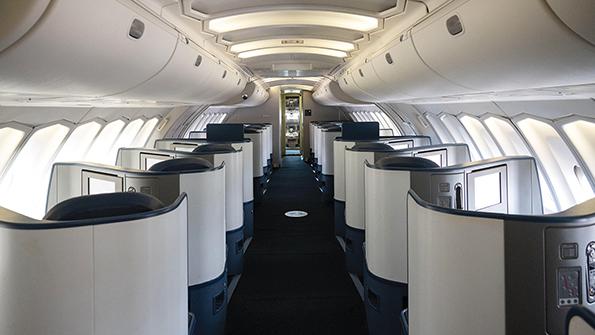
Aviation is breathing a sigh of relief as air travel recovers in the wake of the COVID-19 crisis. If current trends continue, global air travel in revenue passenger kilometers (RPK) will reach pre-COVID levels sometime next year. Yet below the surface, important trends in the composition of air travel merit our attention—particularly a decrease in business travel that might be structural.
A recent survey by the USB Evidence Lab found that the number of short-haul leisure flights per person per year was down 4% in 2022 compared with 2019, and the number of long-haul leisure flights was 14% lower. This is roughly in line with broader industry RPK trends. However, the comparable figures for business travel are 31% lower (short haul) and 19% lower (long haul), respectively. The Global Business Travel Association, which represents corporate travel departments, echoes these findings. International business travel budgets have recovered to 58% of pre-pandemic levels; for domestic business travel, it is 68%.
Why is business travel, which accounts for about 30% of trips, lagging in its recovery? Corporate travel policies clearly have played a role, as restrictions remain, especially with Chinese travel. Geopolitical tensions don’t help, either. A growing number of Western business travelers consider the risk of Chinese travel too high, particularly after government raids of several high-profile U.S. companies. Business aircraft have picked up some traffic formerly carried by airlines, buoying activity for charter and fractional operators.
These phenomena might not last, but a structural change could be unfolding. Approximately 30% of business trips are for intra-company purposes, including internal meetings and employee training. During the pandemic, many companies found they could substitute online meetings and training for these time-consuming trips. An added benefit is that the company’s carbon dioxide emissions are curtailed.
“Business travel has forever changed,” RTX CEO Gregory Hayes said. “About 30% of normal commercial air traffic is corporate-related, but only half of that is likely mandatory. Sophisticated communication technologies have really changed our thinking in terms of productivity.” Hayes’ use of the word “productivity” is telling. Are businesses more productive and profitable with fewer business trips? Most likely, yes. Face-to-face meetings are critical for developing customer relationships or conducting service calls, but for intra-company travel between people who already know each other or share a common culture, some business flights will be replaced by Zoom or Teams meetings.
What are the implications for airlines? Majors and network carriers, which traditionally derive the bulk of their profits from high-yield business travelers, are the most affected. Revenues were down in 2022 compared with 2019 for Lufthansa (-6%), British Airways (-5%) and Air France (-3%). In contrast, low-cost carriers less dependent on business travel experienced robust revenue growth, such as Wizz Air (12%) and Ryanair (8%).
Airlines are adapting to these challenges. Many are targeting higher-yield leisure travelers with upgraded products such as premium economy. On twin-aisles, the percentage of premium seats on international flights increased to 14% in 2022 from 11% in 2019. Airlines are pursuing a growing “premium leisure” segment. For example, Delta Air Lines flights for a Sunday-Thursday trip in September between New York John F. Kennedy International Airport and London Heathrow Airport cost $6,773 for Delta One Suites, $1,959 for Premium, $1,175 for Comfort+ and $825 for the main cabin. The premium economy cabin is growing while business and main cabins are shrinking.
Another strategy is to capture more ancillary revenue from fees for seat selection, baggage, early boarding, hotel and car rental commissions and sales of frequent-flyer points to partners. In 2022, ancillary revenue exceeded $100 billion and comprised 14% of airline revenue.
While current pricing power is strong, airlines must prepare for the next downturn and the reality that more premium economy travelers cannot offset reduced business travel revenue and profits. Carriers might thus downgauge to smaller aircraft for international flights or simply reduce the number of long-haul aircraft. This may be why twin-aisles comprise 30% of jetliner sales, down from 50% last decade.
Aviation has always been about change, and the shift in business travel patterns will provide executives with a new set of opportunities and challenges in the post-pandemic era.
